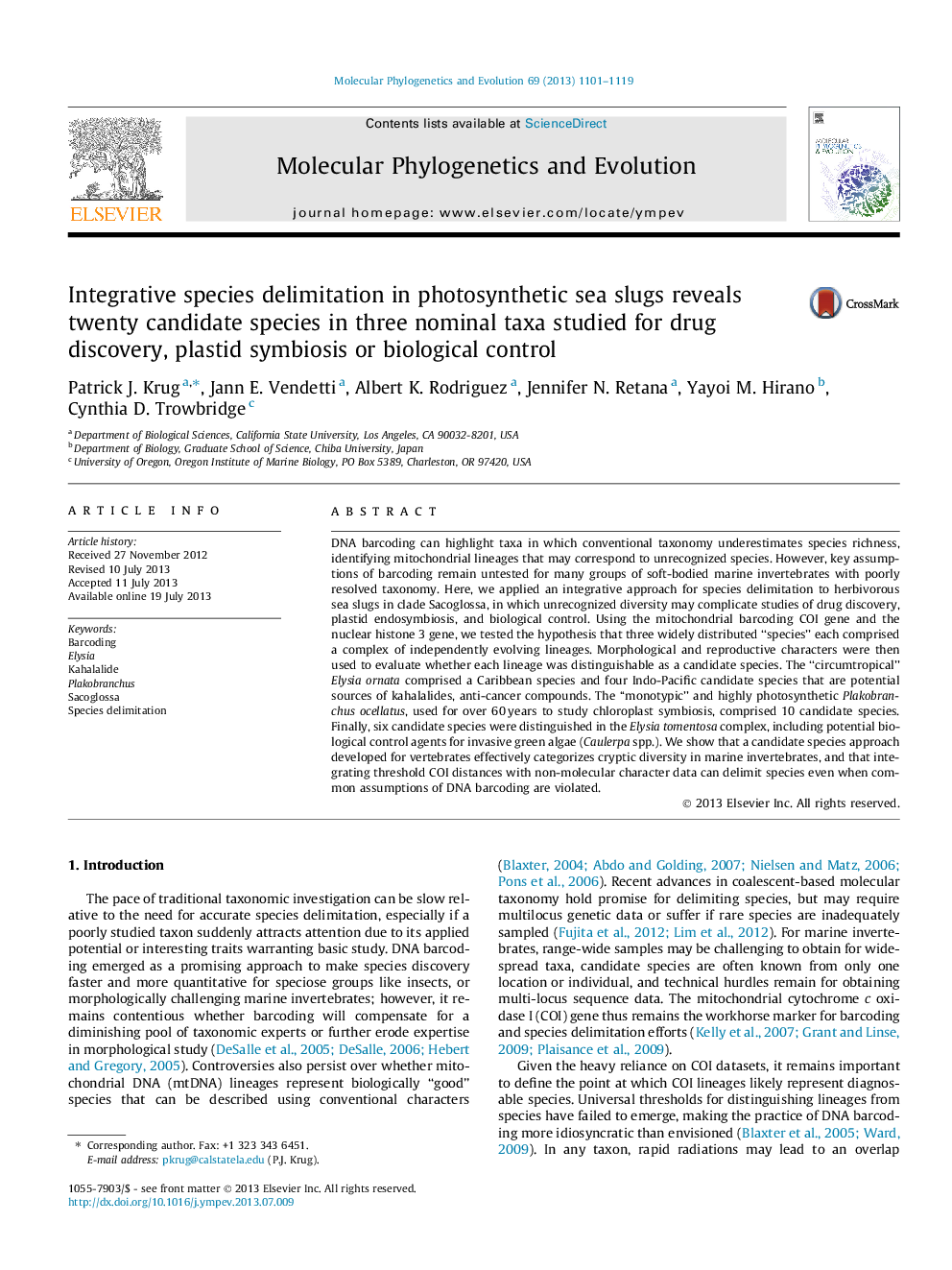| کد مقاله | کد نشریه | سال انتشار | مقاله انگلیسی | نسخه تمام متن |
|---|---|---|---|---|
| 5919744 | 1164270 | 2013 | 19 صفحه PDF | دانلود رایگان |
- DNA barcoding revealed three “species” of photosynthetic sea slugs comprised a total of 20 candidate species.
- Mitochondrial lineages were largely congruent with the distribution of nuclear histone III alleles.
- Morphological and reproductive characters distinguished 14 of 20 sampled lineages as confirmed candidate species.
- Unrecognized species complicate efforts in drug discovery, biological control, and studies of early-stage endosymbiosis.
- Minimum inter-specific divergence was 6-8% at COI, requiring taxon-specific thresholds for effective species delimitation.
DNA barcoding can highlight taxa in which conventional taxonomy underestimates species richness, identifying mitochondrial lineages that may correspond to unrecognized species. However, key assumptions of barcoding remain untested for many groups of soft-bodied marine invertebrates with poorly resolved taxonomy. Here, we applied an integrative approach for species delimitation to herbivorous sea slugs in clade Sacoglossa, in which unrecognized diversity may complicate studies of drug discovery, plastid endosymbiosis, and biological control. Using the mitochondrial barcoding COI gene and the nuclear histone 3 gene, we tested the hypothesis that three widely distributed “species” each comprised a complex of independently evolving lineages. Morphological and reproductive characters were then used to evaluate whether each lineage was distinguishable as a candidate species. The “circumtropical” Elysia ornata comprised a Caribbean species and four Indo-Pacific candidate species that are potential sources of kahalalides, anti-cancer compounds. The “monotypic” and highly photosynthetic Plakobranchus ocellatus, used for over 60Â years to study chloroplast symbiosis, comprised 10 candidate species. Finally, six candidate species were distinguished in the Elysia tomentosa complex, including potential biological control agents for invasive green algae (Caulerpa spp.). We show that a candidate species approach developed for vertebrates effectively categorizes cryptic diversity in marine invertebrates, and that integrating threshold COI distances with non-molecular character data can delimit species even when common assumptions of DNA barcoding are violated.
Journal: Molecular Phylogenetics and Evolution - Volume 69, Issue 3, December 2013, Pages 1101-1119
